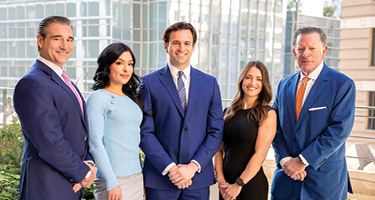Many civil mediations follow a similar pattern: They begin with debates about liability, then segue into debates over money. Lucre is usually the primary (if not the sole) focus, leading to some lively but many tired exchanges over how many dollars a given dispute is worth.
What usually gets short shrift in such exchanges are the indirect costs of most disputes—people’s time and resources, distraction and lost opportunities. Yet those often eclipse the direct costs in the final tally of what has most affected one’s clients.
This reality isn’t obvious to outside counsel or to clients who haven’t yet suffered through a fully litigated matter. The solution on offer here is a series of conversations designed to prompt earlier, more rigorous assessments of all such costs, trade-offs and alternative ways to end most disputes.
First, a confession: Yours truly didn’t fully appreciate this phenomenon until many years into an active litigation practice involving large cases that often lasted several years. In those days, the full impact of litigation seemed clear to my clients because we spent so much time together. Only after I became a general counsel working for one company did all the things that disputes most interrupt—time, focus, opportunities—become apparent.
While civil lawsuits and disputes are not life-and-death matters, we can borrow much from Kübler-Ross, particularly the concept that adjusting to bad news often takes time.”
Examples of lost time include conversations with witnesses and decision makers, preparing for key events (depositions, hearings, trials) and hours spent collecting and interpreting documents and data. Less obvious is the time spent in internal meetings and one-on-one discussions assessing what happened and why—often necessitating further conversations and concerns about accountability. Concurrently, individuals and groups lose time and focus considering their role in everything that led to the dispute in the first place. None of this is conducive to selling more widgets.
The other, less obvious, cost of most disputes—especially for clients new to full-blown litigation—is all the opportunities that wither and die as disputes drag on. These opportunities could involve, say, a repaired business relationship—which grows far less likely as lawsuits languish. Other missed chances include remedial steps to improve compliance and reduce damage exposure, something many defendants resist while a lawsuit remains alive precisely because those fixes will be cited as proof that prior practices were deficient.
What to do?
Marshal all anticipated direct and indirect costs as soon as possible. In-house and outside counsel, acting as partners, are best suited to raise all these cost issues, and best served by doing so right away. Outside counsel can develop (ideally) realistic budgets for the best- (and worst-) case scenarios of how the litigation will evolve. At the same time, in-house counsel can start counting the number of internal personnel to be involved, and the hundreds or thousands of hours likely consumed if the dispute lingers.
Anticipate resistance. All this information is needed to begin tempering the early enthusiasm or anger that many disputes engender: How dare they sue us? How dare they fail to do what they should, forcing us to sue them? These projections lay the groundwork to counter the knee-jerk rationalizations for launching forward forcefully: It doesn’t matter how much it costs; we have a principle to uphold! If we don’t take a firm stand here, others will consider us an easy target! Let’s first make sure we understand all the associated costs.
Play for time to reassess. Considering these trade-offs doesn’t mean they’ll immediately overcome the early enthusiasm and umbrage typical of many disputes. Indeed, it will often take a few rounds to refine these projections and prompt reasoned decision making.
In On Death and Dying (1969), her seminal work studying the impact on those confronted with catastrophic news—typically concerning their impending death—the Swiss psychiatrist Dr. Elisabeth Kübler-Ross famously posited that most people go through a series of stages of grief: denial, then anger and eventually (if all goes well) reaching a point of acceptance. While civil lawsuits and disputes are not life-and-death matters, we can borrow much from Kübler-Ross, particularly the concept that adjusting to bad news often takes time. Indeed, the worse or more unexpected the news, the more time one often needs to recalibrate.
That doesn’t mean that counsel—inside or outside—should delay a necessary conversation about indirect and direct costs. The opposite is true. As you approach these discussions, though, plan for multiple rounds to refine and reinforce the calculation of all expenses and alternatives: Given the likely costs ahead, let’s kick the tires hard before we fully commit here.
By the second or third such conversation, the more direct expenditures on lawyers, expert witnesses and discovery typically begin to hit home. At that point, clients can best measure and balance all the costs of litigating fully against the benefits of settling early on. Acceptance, after a fashion—and as it happens, be sure to thank Elisabeth Kübler-Ross.
Mark LeHocky is a mediator and arbitrator with ADR Services, Inc., who also teaches at the University of California Berkeley’s School of Law on the intersection of law, risk management and decision making. A former complex-litigation attorney and public company general counsel, he was most recently recognized as the 2022 “Lawyer of the Year” for mediation in San Francisco Best Lawyers®.















